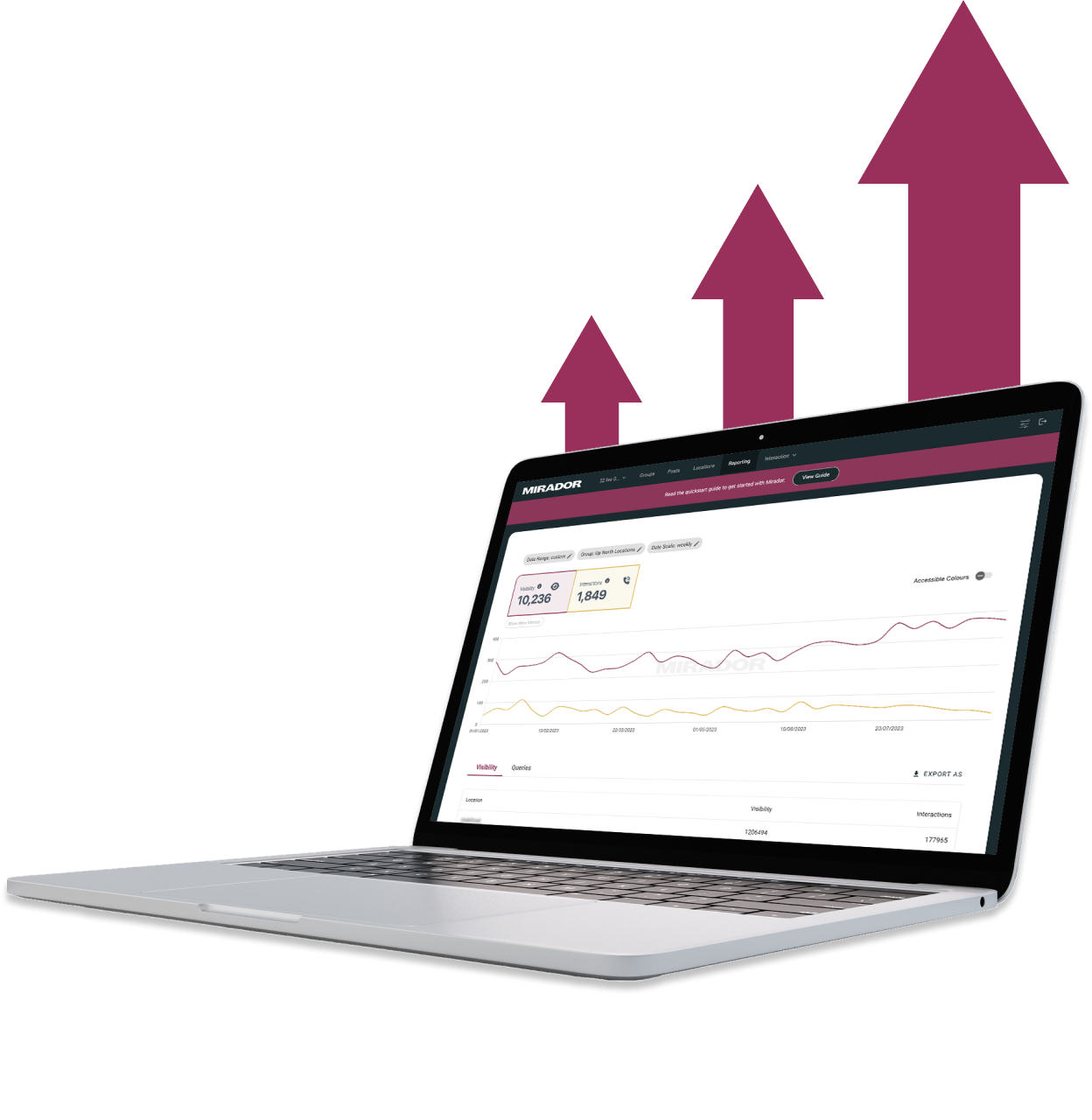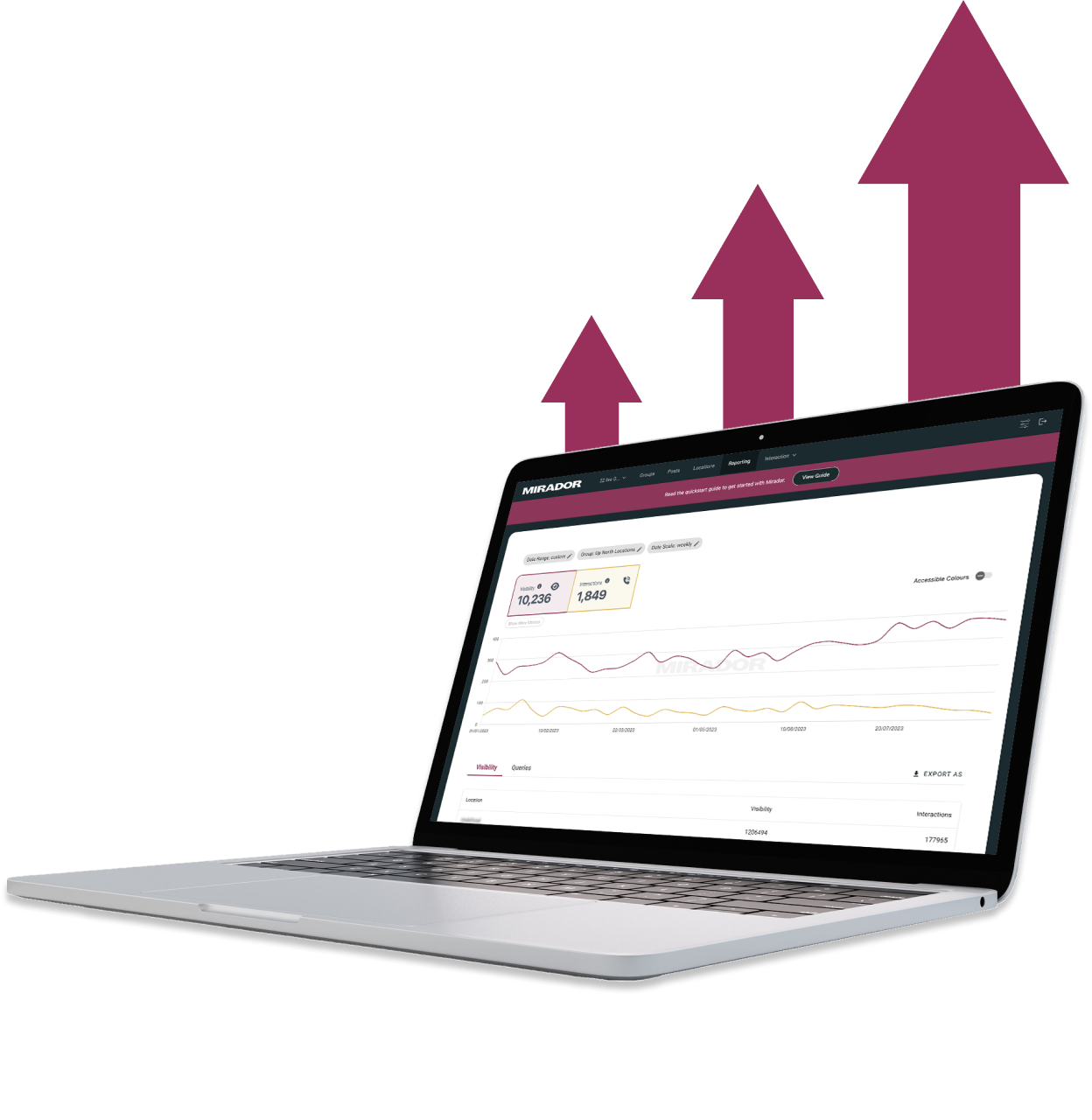Figma to Webflow 🖼️
We turn Figma designs into interactive websites. Perfect for business owners, marketing managers, and web design leads.





High-Performance, Pixel-Perfect Webflow Sites
Let's Talk Design 🗣️
We start by chatting about your Figma design – it's all about understanding what makes your project tick.
Figma to Webflow🌐
Next, we take your design from Figma and turn it into a stunning, fully-responsive Webflow website. Like magic, but better.
We Stick Around 🔄
Once we're done? We're not really done. We stick around, offering ongoing support to keep your site running like a dream.
Design Blues 🎨
Skip the hassle of Figma to Webflow conversions. Hilvy is your trusty sidekick for seamless design translations, saving you precious time and giving your user engagement a real boost. Your Figma designs deserve to shine on a high-performing, responsive, and SEO-optimized Webflow site!
.svg)

.svg)
Is Your Website Just Not Cutting It? 💤
Say goodbye to underwhelming performance and hello to an interactive, SEO-friendly Webflow site. With Hilvy, your stunning Figma designs won't just sit pretty – they'll attract, engage, and impress. Experience simplicity and high performance in one sweet package.

Ready to Experience Magic?
Experience the transformation. Get pixel-perfect, interactive, SEO-ready Webflow sites from your Figma designs with Hilvy.
Spot-On Conversions
From Figma to Webflow, we make sure every pixel is in its place.
Custom Code Love
Need custom code? No problem. We've got you covered.
Device-Friendly
Your site will look stunning on any screen, big or small.
SEO Supercharged
With a structure that's ready for SEO, search engines will love you.
Interactive Elements
We'll make sure your site's interactive elements shine.
Prototype to Reality
Watch as your prototypes transform into live, functional sites.
Get started⚡
Supercharge your webflow website
- 🖥️ Unlimited Webflow Development
- 🛠️ Unlimited Tasks (1 active)
- ⏰ 2-3 Day Turnaround
- 📞 Bi-Weekly Calls
- 🤝 Dashboard & Slack Collaboration
- 🔄 Cancel/Pause Anytime
- 🎨 Webflow Dev + Figma Design
- 🛠️ Unlimited Tasks & Projects (1 active)
- ⏰ 1-3 Day Turnaround
- 📞 Bi-Weekly Calls
- 🤝 Dashboard & Slack Collaboration
- 🔄 Cancel/Pause Anytime
10% OFF
£9.45k billed quarterly
- 🖥️ Unlimited Webflow Development
- 🛠️ Unlimited Tasks (1 active)
- ⏰ 2-3 Day Turnaround
- 📞 Bi-Weekly Calls
- 🤝 Dashboard & Slack Collaboration
- 🔄 Cancel/Pause Anytime
10% OFF
£10.8k billed quarterly
- 🎨 Webflow Dev + Figma Design
- 🛠️ Unlimited Tasks & Projects (1 active)
- ⏰ 1-3 Day Turnaround
- 📞 Bi-Weekly Calls
- 🤝 Dashboard & Slack Collaboration
- 🔄 Cancel/Pause Anytime
- 💸 Competitive pricing
- 📉 More hours = lower price
- 🎨 Design and development
- 📊 Updates via our dashboard

Recommend him to anyone!"
Thanks to Hilvy's expertise and hard work, Mirador Local now has a modern, user-friendly website that perfectly reflects our brand and enhances the overall user experience. I highly recommend them to anyone seeking a talented and reliable designer for their next project."

Gerry White
Global Growth @ Mirador

They didn't stop until the site perfectly matched our design vision, even going past our project timeline to ensure this level of quality. We would definitely work with them again!"

John Outwater
Data Visualization at Renoster

Their communication throughout the project was great and I received frequent updates and the ability to give feedback. It felt like a team effort and the results were fantastic. Hilvy did a great job at bring our idea to life. Would highly recommend"

Marcus Vitelli
Brand Executive at Flexciton

He really knows the ins and outs of Webflow - it's no wonder that he's a certified Webflow Expert! I'm looking forward to the day when I get to work with him again.

Diana Donaldson
CEO, Be Indigo
-p-500.png)
The team was also very responsive and willing to help, will highly recommend for your website projects! :)"


My website continually evolves to meet the demands of my clients and my offerings, which is fantastic. Hilvy also brings fresh ideas and insights on how to enhance and grow in alignment with my objectives and business requirements. I'm excited to see how this new phase unfolds."

Karin Young
Psychotherapist, Karin Counselling

They also remained really patient with us throughout and gave us great advice on how to set ourselves up for the long term, and then also gave us some valuable training on Webflow, upskilling our team. We had a clear way of providing changes and feedback via a tool he suggested which worked really well, the process was smooth. If you're a start up or scale up looking for an excellent web developer to turn your ideas into reality, look no further!!"

Ben Leftley
Senior Delivery Manager at Unmind
Their excellent blend of technical and visual knowledge helped us create a fast, SEO-optimized site that looks fantastic and stays true to our brand. We would gladly hire Hilvy again!"

Eliza Gerland
Strategic Marketer @ UFODrive
Throughout the process, they patiently addressed all questions that arose during our platform transition, delivering not only an exceptional site but also tutorials on managing it."

Their design expertise is outstanding, and they were able to craft a bespoke, feature-rich website that looks fantastic and functions seamlessly. I wholeheartedly recommend Hilvy to anyone seeking webflow designers who truly understand their craft!"

Taita Ngetich
CEO @ Synnefa


Miles Owen
Their Webflow development expertise is top-notch, and they effortlessly keep up with the dynamic nature of early-stage startups."

Growth at Briink


Marketing Lead @ Provenance
Figma to Webflow Agency: Streamlining Your Design Workflow
Understanding Figma to Webflow Agency
Figma to Webflow Agency is a service that helps users to seamlessly convert their Figma designs into high-performing, responsive, and SEO-optimized Webflow sites. This service is especially useful for those who are not familiar with Webflow or do not have the time or resources to manually transfer their designs from Figma to Webflow.
The Figma to Webflow Agency service is provided by Hilvy, a company that specializes in Figma to Webflow conversions. The agency's team of experienced developers and designers work closely with clients to ensure that their designs are accurately translated into functional Webflow sites.
To use the Figma to Webflow Agency service, users simply need to provide their Figma designs to the agency. The agency then takes care of the rest, including converting the designs into clean code in Webflow, optimizing the site for search engines, and ensuring that the site is fully responsive on all devices.
One of the benefits of using Figma to Webflow Agency is that it saves users time and resources. Instead of spending hours manually transferring their designs from Figma to Webflow, users can simply hand over their designs to the agency and focus on other aspects of their project.
Overall, Figma to Webflow Agency is a reliable and efficient service for those who want to quickly and accurately convert their Figma designs into functional Webflow sites.
The Developer's Role
The Importance of a Webflow Developer
When it comes to building a website, having a skilled developer is crucial. This is especially true when it comes to using a platform like Webflow. A Webflow developer has the knowledge and expertise to take a design created in Figma and turn it into a fully functional website.
One of the most important roles of a Webflow developer is to ensure that the website is optimized for performance. This includes things like ensuring that images are properly compressed and that the code is clean and efficient. A Webflow developer will also ensure that the website is responsive and looks great on all devices.
Another important role of a Webflow developer is to ensure that the website is accessible. This means that the website can be easily navigated by users with disabilities. A Webflow developer will ensure that the website is compliant with accessibility standards such as WCAG 2.1.
A Webflow developer also plays a key role in ensuring that the website is secure. This includes things like ensuring that the website is protected from hackers and that user data is stored securely.
Overall, a skilled Webflow developer is essential for creating a high-quality website that is optimized for performance, accessible, and secure.
The Power of Figma in Web Design
Figma is a popular design tool used by web designers to create stunning designs. It is known for its easy-to-use interface, collaborative features, and powerful design tools. Web designers use Figma to create layouts, color schemes, and other design elements that are essential for building a website. In this section, we will explore the power of Figma in web design.
Harnessing Figma's Layouts
One of the most powerful features of Figma is its ability to create layouts. Figma's auto-layout feature allows designers to create responsive designs that adjust to different screen sizes. This feature is especially useful for web design, where responsive design is crucial. With Figma, designers can create layouts that adjust to different screen sizes without having to manually adjust each element.
Figma's layout feature also allows designers to create reusable components. This means that designers can create a component, such as a navigation bar, and use it across multiple pages. This saves time and ensures consistency across the website.
Color Management in Figma
Color is an essential aspect of web design. With Figma, designers can manage colors easily. Figma allows designers to create color palettes, which can be used across the website. This ensures consistency and makes it easy to update colors across the website.
Figma also allows designers to use color styles. This means that designers can create a color style and apply it to multiple elements. If the color needs to be changed, it can be updated in one place, and it will update across all elements that use that color style.
In conclusion, Figma is a powerful tool for web designers. Its layout and color management features make it easy to create stunning designs that are responsive and consistent. Harnessing the power of Figma can help web designers create websites that are beautiful and functional.
Webflow's No-Code Advantage
Webflow is a no-code website builder that allows users to design and develop websites without writing a single line of code. With its intuitive drag-and-drop interface and powerful design tools, Webflow has become one of the most popular website builders on the market.
One of the main advantages of using Webflow is its no-code approach. This means that users don't need any programming knowledge to create a website. Instead, they can use Webflow's visual editor to design and build their site. This makes it a great option for designers, marketers, and entrepreneurs who want to create a website but don't have the technical skills to do so.
Webflow's no-code approach also allows users to iterate on their designs quickly. They can make changes to their website in real-time and see the results immediately. This makes the design process more efficient and allows users to create websites faster than with traditional web development methods.
Another advantage of Webflow is its flexibility. Users can create custom designs and layouts using Webflow's design tools, and they can also integrate third-party tools and services into their website. This makes it easy to add features like contact forms, social media feeds, and e-commerce functionality to a website.
Finally, Webflow is a great option for agencies and freelancers who want to offer website design and development services to their clients. With Webflow, they can create fully functional websites without writing any code. This allows them to deliver work to clients faster and more efficiently than with traditional web development methods.
In summary, Webflow's no-code approach, flexibility, and efficiency make it a great option for anyone who wants to create a website without writing code. Its visual editor and design tools make it easy to create custom designs and layouts, and its integration with third-party tools and services allows users to add features and functionality to their website.
Webflow's CMS Capabilities
Webflow is a popular website builder that provides a powerful content management system (CMS) that allows users to create, edit, and publish content on their website. The Webflow CMS is a user-friendly platform that enables businesses to manage their website content without any coding skills.
The Webflow CMS offers a wide range of features that make it a highly flexible and customizable platform. It allows users to create dynamic content, including blog posts, product pages, and landing pages. The CMS also provides a range of tools for managing content, including a drag-and-drop editor, content scheduling, and version control.
One of the key benefits of the Webflow CMS is its ability to integrate with third-party applications. This means that users can easily connect their website to other tools and services, such as email marketing platforms, social media channels, and payment gateways. The CMS also provides a range of APIs that allow developers to build custom integrations with other platforms.
The CMS also provides a range of SEO tools that help businesses optimize their website for search engines. This includes the ability to add meta descriptions, alt tags, and schema markup to pages and posts. The CMS also provides a range of analytics tools that allow users to track website traffic, engagement, and conversions.
Overall, the Webflow CMS is a powerful platform that provides businesses with a range of tools for managing their website content. It is a highly flexible and customizable platform that can be tailored to meet the specific needs of any business.
Achieving Pixel-Perfect Design
When it comes to creating a website, achieving pixel-perfect design is crucial for a professional and polished look. Figma to Webflow agencies specialize in converting Figma designs into Webflow sites, ensuring that every pixel is in the right place.
Pixel-perfect design means that every element on the website is precisely placed and aligned with the design. This attention to detail ensures that the website looks clean and professional, which can help to build trust with visitors.
Figma to Webflow agencies use a combination of Webflow's powerful design tools and their expertise in Figma to create high-quality, pixel-perfect websites. They ensure that the website looks great across all devices, from desktops to mobile phones, and that the design is consistent throughout.
Achieving pixel-perfect design requires a keen eye for detail and a thorough understanding of design principles. Figma to Webflow agencies have the expertise and experience to ensure that every aspect of the website is designed to perfection.
Overall, working with a Figma to Webflow agency can help to ensure that your website looks professional and polished, with every pixel in its place.
Responsive Design with Webflow
Webflow is a powerful tool for creating responsive websites that adapt to different screen sizes. With its intuitive visual interface, designers can easily create layouts that adjust to various devices without writing any code.
Webflow's responsive design features include reflowing content, fixed sizing, relative sizing, and breakpoints (media queries). Reflowing content refers to content that adjusts its width based on the browser's viewport width. Fixed sizing allows designers to set specific dimensions for elements, while relative sizing scales elements proportionally. Breakpoints let designers define different layout and styling rules for different screen sizes.
Webflow's responsive design capabilities are enhanced by its integration with Figma. The Figma to Webflow plugin makes it easy to transfer designs from Figma to Webflow, preserving the layout and styling information. Designers can use Figma's auto layout feature to create responsive designs and then export them to Webflow as responsive flexbox structures.
Once the designs are in Webflow, designers can use Webflow's powerful CMS to wire up content and add interactivity with IX2. They can also take advantage of Webflow's one-click publishing to get their site live faster.
In summary, Webflow provides a comprehensive set of tools for creating responsive websites that work seamlessly across different devices. Its integration with Figma makes it easy to transfer designs from one tool to the other, streamlining the design process. With Webflow, designers can create beautiful and functional websites without writing any code.
Utilizing Flexbox in Webflow
Webflow offers a powerful tool for precise alignment and control of layouts through the use of Flexbox. Flexbox, also known as flexible box layout, is a layout model that allows elements to align and distribute space within a container. It offers layout control in one dimension, either horizontally or vertically, making it an effective tool for responsive design.
With Webflow's Flexbox, designers can easily create responsive designs that adapt to different screen sizes and device types. The Flexbox feature allows designers to align elements within a container, control the spacing between elements, and distribute space evenly. Flexbox is particularly useful for creating complex layouts, such as navigation menus, image galleries, and card layouts.
Webflow's Flexbox feature also offers a range of options for controlling the size and position of elements within a container. Designers can use Flexbox to control the width and height of elements, as well as their position within the container. This allows for greater control over the layout and design of a website, making it easier to achieve the desired look and feel.
In addition to its layout and design capabilities, Webflow's Flexbox feature also offers a range of options for controlling the behavior of elements within a container. Designers can use Flexbox to control the order in which elements appear, as well as their orientation. This allows for greater control over the user experience, making it easier to create intuitive and user-friendly designs.
Overall, Webflow's Flexbox feature is a powerful tool for designers looking to create responsive and visually appealing designs. With its range of layout and design options, as well as its ability to control the behavior of elements within a container, Flexbox is an essential tool for any designer looking to create effective and engaging websites.
Impact of Speed in Web Design
Speed is a crucial factor in web design, as it affects user experience and search engine rankings. Users expect websites to load quickly, and if they don't, they are likely to leave and never return. Additionally, search engines like Google prioritize fast-loading websites in search results, which can have a significant impact on traffic and revenue.
When it comes to designing websites, speed can be a challenge. Creating high-quality designs can take a lot of time, and implementing those designs into a website can be even more time-consuming. However, using tools like Figma and Webflow can help speed up the design process and improve website performance.
Figma is a cloud-based design tool that allows designers to create and collaborate on designs in real-time. It offers a range of features and integrations that can help speed up the design process, such as design system management and team collaboration tools.
Webflow, on the other hand, is a website builder that allows developers to create custom websites without needing to write code. It offers a range of drag-and-drop tools and integrations that can help speed up the development process, such as CMS integration and e-commerce functionality.
Using Figma and Webflow together can have a significant impact on the speed of the web design process. Designers can create high-quality designs in Figma and then easily transfer them to Webflow for development. This can save time and reduce the risk of errors or inconsistencies in the final product.
Additionally, Webflow's built-in optimization tools can help improve website performance and speed. For example, Webflow automatically optimizes images and code, which can help reduce load times and improve user experience.
Overall, the impact of speed in web design cannot be overstated. By using tools like Figma and Webflow, designers and developers can work more efficiently and create high-quality websites that load quickly and provide a seamless user experience.
Frequently Asked Questions
How can I convert my Figma design to a Webflow website?
To convert a Figma design to a Webflow website, you can use a plugin or hire a Figma to Webflow agency. Some popular plugins include the Figma to Webflow plugin, which converts auto layout frames in Figma to clean code in Webflow. Alternatively, you can hire an agency that specializes in Figma to Webflow conversion to ensure a pixel-perfect conversion.
What is the process for converting a Figma landing page to Webflow?
The process for converting a Figma landing page to Webflow involves exporting the Figma design to Webflow and then manually recreating the design in Webflow. This process can be time-consuming and requires a high level of expertise in both Figma and Webflow.
Is it better to design in Figma or Webflow?
Figma and Webflow both have their strengths and weaknesses when it comes to design. Figma is great for creating high-fidelity designs and collaborating with team members, while Webflow is better for creating responsive websites and custom interactions. Ultimately, the choice between Figma and Webflow depends on your specific design needs.
How good is the Figma to Webflow conversion?
The quality of the Figma to Webflow conversion depends on the expertise of the person or agency doing the conversion. A skilled agency can provide a pixel-perfect conversion that accurately replicates the Figma design in Webflow. However, it's important to note that some design elements may not translate perfectly, and minor adjustments may be necessary.
Are there any free tutorials for converting Figma to Webflow for an agency?
Yes, there are several free tutorials available online that can help agencies learn how to convert Figma designs to Webflow. For example, Webflow University offers a course that teaches a tried-and-true workflow for creating a website from scratch using Figma and Webflow.
Where can I find Figma to Webflow experts on Fiverr?
Fiverr is a popular freelance platform where you can find Figma to Webflow experts. Simply search for "Figma to Webflow" or "Webflow development" to find freelancers who specialize in Figma to Webflow conversion. It's important to read reviews and check portfolios to ensure you're hiring a qualified expert.















%201.svg)







